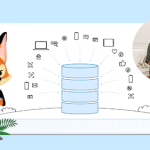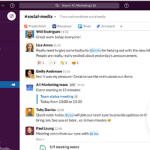The workplace has continuously experimented, innovated and evolved from the age of the industrial revolution to the current era of digitalisation. Most efforts have aimed to reduce the time and effort required for tasks so that people can concentrate on more creative or value-adding aspects of their jobs. This eventually led to the birth of workplace automation, where we moved from creating machines to assist us in our work to making them work for us.
Workplace automation has now evolved into intelligent automation, bringing new possibilities for change. The way data is evaluated, decisions are made, and activities are carried out inside a workflow or system – everything is being changed by AI and the power of intelligent automation.
Building a robust, intelligent automation environment requires an organisation to use a variety of technologies (such as robotics, bots, devices) and leverage AI capabilities like machine learning, natural language processing, augmented intelligence and computer vision. When such intelligent automation is deployed across the organisation, it can change the nature of work and how it is accomplished.
Why must businesses adopt intelligent automation?
The future of work is here, and it’s hybrid. Automating internal processes has become critical to connecting remote employees, increasing their productivity, and helping them maintain a work-life balance. Automation not only helps address issues of labour or skill shortages, but also assists companies in creating a positive work environment.
For instance, repetitive and routine tasks can be replaced by an automated workflow, letting skilled employees concentrate on more strategic and creative work. This leads to greater productivity, enhances the employee experience, spurs innovation, and provides your company with a competitive edge.
Intelligent automation also results in reduced operational risk, by eliminating variability associated with human employees, and higher efficiency, letting you achieve better results with the same resources.
Lastly, automating laborious workflows for manual operations like data input and invoicing reduces human error.
Clearly, the modern organisation needs to leverage automation to help employees easily perform their duties. Let’s take a closer look at how this can happen.
Challenges in the new work environment and how intelligent workplace automation can help
Enabling effective cross-team collaboration
Cross-department collaboration can be challenging in a remote or hybrid working model, especially with traditional methods of communication. An automation-enabled environment offers highly agile channels for collaboration.
For example, a collaborative platform like Slack allows users across teams to share ideas, decks, documents and more, as and when they are created.
Or automation can be used to share employee notes to an online whiteboard during a virtual brainstorming session. Another example is using automated workflows to push a task from one employee to the next person in the process line. Clearly, the possibilities of using automation to solve common collaboration problems are varied and significant.
Increasing visibility of customer data across teams and workflows
Waiting for data from another team to drive your own team’s decisions can be a bottleneck. For instance, your marketing team may require data about a customer segment’s purchase patterns to shape their latest campaign. However, the sales team may be out on the field, away from their laptops. Until they share their comprehensive insights, the team cannot proceed. This can delay a campaign that meets the moment for the customers. An automated and unified system which captures all customer data and interactions in a single source of truth can speed up data access, productivity, decision-making, and task progress.
Scaling and innovating without overburdening operations
The future of work demands that employees focus on innovating for maximum customer delight. This requires you to create a work environment where they are freed from low-value tasks and have more time to work on creative goals. Intelligent automation, supplemented with decision-making capabilities, leverages automated workflows for different functions. Be it introducing new members or establishing a process to ensure the legal team reviews every marketing material, intelligent automation ensures precious resources are not burdened with high-volume, low-involvement processes.
Taking the stress out of getting sign-offs
Employees can log in to an automated system securely from anywhere to create standard processes and get swift approvals. Instead of following up on separate threads or systems for the same, they can tie such requests to tasks, projects or channels. This makes it easy for all stakeholders to review, update, and approve requests on time. For instance, a sign-off on a new image library might not be an urgent task for busy PoCs unless you align it to a channel showing the timelines for the latest social media campaign.
Creating access to integrated intelligence for all employees
The future of work is rooted in data and data-driven intelligence. Actionable intelligence, derived from integrated insights and cross-team data, is key to effective employee engagement. By combining Slack with Customer 360, organisations can link employees with all the apps and data they use on a single platform, letting them easily access actionable insights to make informed decisions.
Slack – bringing you closer to the future of work
A digital HQ such as Slack, when used with Salesforce integrations, matches your teams with the apps and data they need in a single, collaborative workspace. With Slack, you can enable easy discovery of information, knowledge exchange and effortless collaboration. Plus, you can ensure that all your team’s favourite apps are gathered in one location. Designed to keep in mind employees’ natural working styles – in-person or remote, structured or informal, and real-time or offline – Slack enhances productivity and collaboration, making it easier for you to inch closer to your business goals.
Want to know more about how Slack can redefine the employee experience?
Click here for a detailed overview of Slack




























